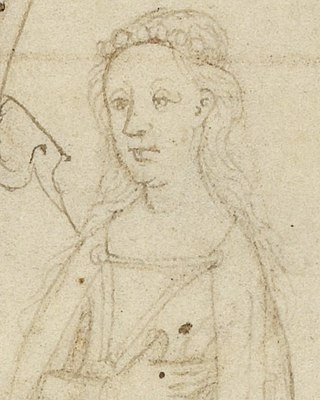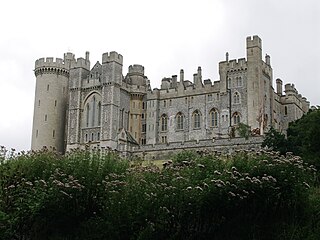| Epiphany Rising | |||||||
|---|---|---|---|---|---|---|---|
 Windsor Castle, where Henry IV stayed during the Epiphany rising | |||||||
| |||||||
| Belligerents | |||||||
| | Rebel forces | ||||||
| Commanders and leaders | |||||||
| | | ||||||
The Epiphany Rising was a failed rebellion against King Henry IV of England in early January 1400.
| Epiphany Rising | |||||||
|---|---|---|---|---|---|---|---|
 Windsor Castle, where Henry IV stayed during the Epiphany rising | |||||||
| |||||||
| Belligerents | |||||||
| | Rebel forces | ||||||
| Commanders and leaders | |||||||
| | | ||||||
The Epiphany Rising was a failed rebellion against King Henry IV of England in early January 1400.
Richard II rewarded those who had supported him against Gloucester and the Lords Appellant with a plethora of new titles. Upon the usurpation and accession of King Henry IV in 1399, many of those titles were placed under attainder, due to the complicity of their holders in the murder of the Duke of Gloucester.
The ringleaders of the conspiracy were John Montagu, 3rd Earl of Salisbury, John Holland, 1st Earl of Huntingdon (formerly Duke of Exeter and husband of Henry IV's sister Elizabeth) and half-brother to Richard II, Thomas Holland, 3rd Earl of Kent (formerly Duke of Surrey), and Thomas le Despenser, 4th Baron le Despencer (formerly Earl of Gloucester). Other members included Edward of Norwich, 1st Earl of Rutland (formerly Duke of Aumale), Ralph Lumley, 1st Baron Lumley, Sir Thomas Blount and Sir Bernard Brocas. They met on 17 December 1399 at the Abbey house in Westminster and plotted to capture the new King Henry IV while he was at Windsor for the feast of Epiphany.
They hoped to seize the king during a tournament, kill him, and restore Richard II to the throne. However, Edward of Norwich betrayed the conspirators to King Henry, although according to Tait, contemporary English sources which describe the conspiracy make no mention of Rutland, and his role in it is open to doubt. [1] Nevertheless, forewarned, Henry failed to appear at Windsor and began to raise an army in London. Kent and Salisbury arrived at the castle with a force of about 400 men-at-arms and archers, but hearing that the king, forewarned, was no longer there, quickly left. [2]
The conspirators fled to the western counties and raised the standard of rebellion. However, they obtained little support and were quickly apprehended by local authorities. While attempting to seize Cirencester, Lumley was beheaded in a short but violent skirmish by the townsfolk and Salisbury and Kent were captured. Held briefly in custody, they were abruptly beheaded without trial on 7 January 1400. Le Despenser was captured at Bristol by a mob and was also summarily beheaded on 13 January 1400. Huntingdon was captured at Pleshey and dealt with likewise on 16 January 1400. Blount escaped to Oxford, where he was hanged, drawn and quartered on 12 January 1400. Brocas was captured in Cirencester and beheaded at Tyburn. Those executed were subsequently attainted in March; the brother of Kent and the sons of Salisbury and Huntingdon were later restored to their fathers' titles. The attainders were formally reversed in 1461 by a Yorkist parliament.
The rebellion also convinced Henry IV that a deposed, imprisoned and alive King Richard was a very dangerous liability for him. The deposed monarch would come to his death 'by means unknown' in Pontefract Castle by 17 February 1400. [3]
Year 1400 (MCD) was a leap year starting on Thursday of the Julian calendar. The year 1400 was not a leap year in the Proleptic Gregorian calendar.

Ralph Neville, 1st Earl of WestmorlandEarl Marshal, was an English nobleman of the House of Neville.
John Holland, 1st Duke of Exeter, 1st Earl of Huntingdon, KG, of Dartington Hall in Devon, was a half-brother of King Richard II (1377–1399), to whom he remained strongly loyal. He is primarily remembered for being suspected of assisting in the downfall of King Richard's uncle Thomas of Woodstock, 1st Duke of Gloucester (1355–1397) and then for conspiring against King Richard's first cousin and eventual deposer, Henry Bolingbroke, later King Henry IV (1399–1413).

Thomas Holland, 1st Duke of Surrey, 3rd Earl of Kent, KG, Earl Marshal was an English nobleman and courtier.
Constance of York, Countess of Gloucester was the only daughter of Edmund of Langley, 1st Duke of York, and his wife Isabella of Castile, daughter of King Peter of Castile and his favourite mistress, María de Padilla.

Thomas Despenser, 2nd Baron Despenser, 1st Earl of Gloucester KG was the son of Edward le Despenser, 1st Baron le Despencer, whom he succeeded in 1375.
Isabella of Castile, Duchess of York was the daughter of King Peter and his mistress María de Padilla. She accompanied her elder sister, Constance, to England after Constance's marriage to John of Gaunt, 1st Duke of Lancaster, and married Gaunt's younger brother, Edmund of Langley, 1st Duke of York.
Joan Holland was the third daughter of Thomas Holland, 2nd Earl of Kent, and Alice FitzAlan. She married four times. Her first husband was a duke, and the following three were barons. All of her marriages were most likely childless.

Henry le Despenser was an English nobleman and Bishop of Norwich whose reputation as the 'Fighting Bishop' was gained for his part in suppressing the Peasants' Revolt in East Anglia and in defeating the peasants at the Battle of North Walsham in the summer of 1381.
Events from the 1400s in England.

Ralph Lumley, 1st Baron Lumley was an English nobleman, soldier and administrator under King Richard II, who was stripped of his lands, goods and title and executed for rebelling against King Henry IV.
Joan FitzAlan, Countess of Hereford, Countess of Essex and Countess of Northampton was the wife of the 7th Earl of Hereford, 6th Earl of Essex and 2nd Earl of Northampton. She was the mother of Mary de Bohun, the first wife of Henry of Bolingbroke who later reigned as King Henry IV, and Eleanor de Bohun, Duchess of Gloucester. She was the maternal grandmother of King Henry V.

Isabel le Despenser, Countess of Worcester and Warwick, LG was the posthumous daughter and eventually the sole heiress of Thomas le Despenser, 1st Earl of Gloucester by his wife, Constance of York, daughter of Edmund of Langley. She was born six months after her father had been beheaded for plotting against King Henry IV of England (1399–1413).

Lady Alice Holland, Countess of Kent, LG, formerly Alice FitzAlan, was an English noblewoman, a daughter of the 10th Earl of Arundel, and the wife of the 2nd Earl of Kent, the half-brother of King Richard II. As the maternal grandmother of Anne de Mortimer, she was an ancestor of kings Edward IV and Richard III, as well as King Henry VII and the Tudor dynasty through her daughter Margaret Holland. She was also the maternal grandmother of Joan Beaufort, Queen of Scots.

Eleanor Holland, Countess of Salisbury, was an English noblewoman, the daughter of Thomas Holland, 2nd Earl of Kent, a half-brother of King Richard II of England. She was the first wife of Thomas Montagu, 4th Earl of Salisbury. One of her brothers was Edmund Holland, 4th Earl of Kent, to whom she was co-heiress. She is not to be confused with her eldest sister Alianore Holland, Countess of March who bore the same name.

John Montagu, 3rd Earl of Salisbury and 5th and 2nd Baron Montagu, KG was an English nobleman, one of the few who remained loyal to Richard II after Henry IV became king.
Sir Thomas Blount was a supporter of Richard II of England.
Sir Bernard Brocas was an English knight, landowner and administrator who was executed for his part in the Epiphany Rising.

The Holland family was a medieval-era English noble family. Many Hollands were Dukes, Earls, Knights and Barons in medieval England, and they played significant roles in the struggles for the crown in the fourteenth and fifteenth century.